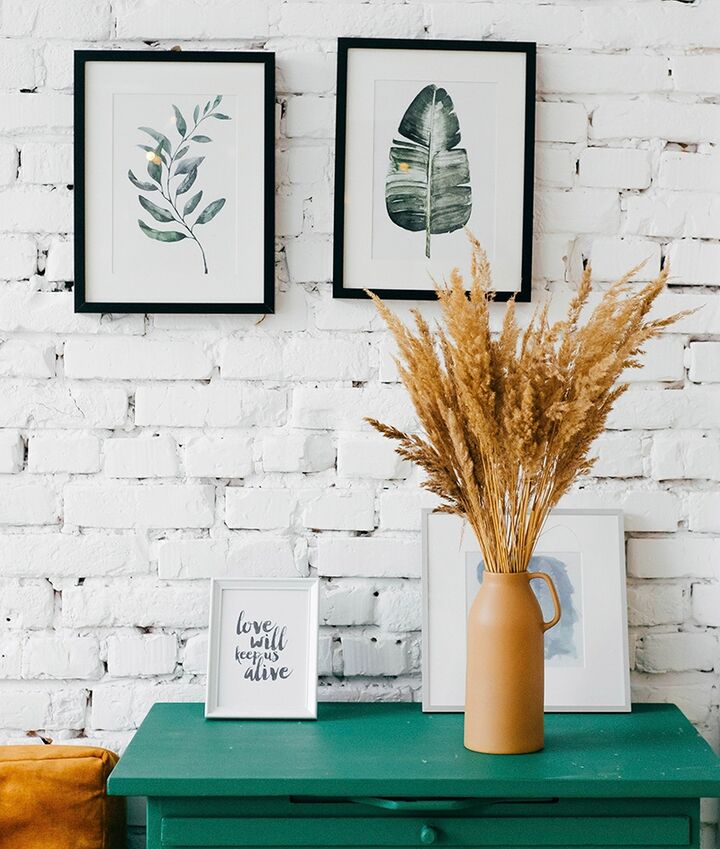
Photo by Alexandra Gorn
Curtains blocking the natural light
Thick curtains can be extremely beautiful, but if they prevent daylight from reaching the entire room, your room will feel much less inviting.
Do this instead: Choose a clean curtain in a neutral color. It provides texture and warmth while being crisp and bright enough to allow more of the much sought-after daylight. To maximize natural light if your room has small windows – avoid placing furniture directly in front of the windows, especially if the furnitures are taller than the window boards.
Curtains hanging too low
Hanging the curtains just above the window or halfway between the window and the ceiling used to be the norm, but according to the pros it is a missed opportunity.
Do this instead: Hang the curtains as close to the ceiling as you can. This makes even small windows look big. Also extend the curtains on the width so that they extend 10-15 cm (4-6") past the outer edge of the window board. In this way, most of the window is visible when the curtains are not shut closed, creating the illusion of larger windows and maximizing natural light.
Too small carpet
Too small a mat can make a room feel divided and chopped and easily destroy the overall impression of the room.
Do this instead: Allow the carpet to extend beyond the edges of the furniture or furnitures. In large rooms, it is best to have a larger mat where the furniture is directly on the mat, while a furniture in a smaller room can advantageously stand outside the mat as long as some of the legs are still on the mat.
Paintings hanging at the wrong height
Having to bend your neck to be able to look at a painting is both uncomfortable and impractical. You want your eyes to be able to wander around the room in a natural way, which is only possible if the paintings are at eye level.
Here's how: Try splitting the walls into four horizontal rows. Hang your paintings or art in the second row from the top. To test if it works, you can use paint tape to measure the paintings on the wall before you hang them up.
Furniture along the wall
If you have a small room, the first instinct might be to push every single piece of furniture as close to the wall as possible, but it can make the room feel even smaller! The “breathing room” near the walls makes a space feel bigger.
Do this instead: Let a couple of furniture "float" in the room. Try to decorate a small room with two armchairs and a small mat a bit away from the wall. It gives the illusion of a more airy and less crowded room!
White, white, white
A common misconception is that painting a room completely in white also makes it feel larger and more beautiful, but it does not always work. If the room is very little natural light then white walls can easily look flat and dull.
Do this instead: Try painting the room in a more neutral tone, e.g. a soft gray. These have soft, bluish undertones that give the illusion that the wall changes color during the day, giving the space a little more life than a regular white color would.
Too bright lights
Lighter is not always better when it comes to lamps. Lamps with far too high watts can make a room feel cold and sharp instead of warm and cozy.
Do this instead: Stick to lamps with 60-75 watts in public areas where you still want work lights without being too intense and harsh. In more personal spaces such as bedrooms and bathrooms, 40-60 watts is your best option. It gives a softer and more atmospheric light while there is still sufficient lighting for e.g. reading. Another tip is to use more light sources instead of just having a ceiling light as the only light source in a room.
Too few and too small paintings
If you have a large wall with a lonely, small painting, it simply looks a little funny, as if the lone painting is floating on the wall rather than anchoring the space. It easily becomes distracting and does not utilize the room's full potential!
Do this instead: There is a simple rule of thumb to hang art above a bed or sofa. The painting or artwork must fill at least two-thirds of the wall space directly above the furniture in order for it to feel balanced. However, you do not need to get a giant board to fill the space, but can "cheat" a little by hanging several paintings in an asymmetrical grid above the furniture and thus filling the same wall surface.
Too many decorative pillows
It's easy to feel that you need a whole lot of decorative pillows to make your sofa feel cozy, but far too many pillows can instead have the opposite effect.
Do this instead: Stick to the simple. Two pillows on each end are really all you need to make a sofa feel both hip and cozy without feeling overcrowded and cluttered. If you want to increase the cozy factor, try using a large and a smaller pillow at each end of the sofa.
Furnitures blocking the room's flow
It may be tempting to set the sofa so that it faces a window or fireplace, but if that means you are greeted by the back of the sofa as you enter the room then it is generally less pleasant. To be met by the back of the sofa, and the backs of those sitting in it, when you walk into a room can easily feel unwelcome.
Do this instead: If you have a large wall, use it to anchor your sofa in the room. It is much nicer to be met by a couch or armchair's front when entering a room because they are not as clumsy. If, on the other hand, you can't hide the sofa's back against a wall, you can always soften the look by placing a small console table in front of your back and decorating it with books and other decorative items.




